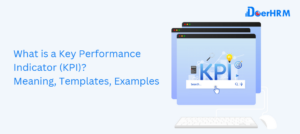Key performance indicators, or KPIs, are instrumental to measuring the performance of any business.
What Is Key Performance Indicator (KPI)
Key Performance Indicators (KPIs) are quantifiable goals intended to measure the scope or potential of a company’s success or attainable business objectives. These performance measurements can help indicate which components of your business are the most beneficial to its progress, which ones can help optimize its performance, or which areas of your company may need work.
KPIs, sometimes called KSIs (or key success indicators), should be quantifiable metrics that can be measured regularly to chart the success of a project or a business’ operation as a whole. They can apply to any element of your business, from marketing to customer service, to employee satisfaction, to financial health.
12 Types of Key Performance Indicators
There are a variety of KPIs that can help measure the performance or progress of your business. Some types of KPIs include:
Quantitative indicators
Quantitative indicators are represented by continuous or discrete numbers, which can be ratios, percentages, or whole numbers that represent values like rating scales, dollars, or weight. These indicators are the most straightforward quantifiable measures of performance, as they present direct numerical values.
Qualitative indicators
These indicators are not expressed numerically but through feelings or opinions. An employee satisfaction survey can be an example of qualitative data where performance is based on feedback.
Leading indicators
Leading indicators are variables that can help identify long-term trends and possibly predict successful future outcomes of your business processes.
Lagging indicators
Lagging KPIs compare a business’ current performance in a particular field with their past performance in the same field.
Input indicators
Input indicators are a type of KPI that track the resources necessary to produce the intended outcome, such as funding or extra staff. Input indicators can help companies keep track of how efficiently they are using their resources.
Output indicators
Output indicators measure the success or failure of your business activities, like the number of goods or services created through a particular process. Revenue growth and new customer acquisition also indicate how well your business is performing.
Process indicators
Process indicators represent the efficiency of a business’s process and how effectively it is functioning.
Practical indicators
Practical indicators explore the function of an existing process at a company, usually involving observation or feedback on that process.
Directional indicators
Directional indicators help determine the company’s success in comparison with competitors, while practical indicators are specific to the company’s process within itself.
Actionable indicators
Actionable KPIs measure a company’s ability to enact change whether through political action or a shift in company culture.
Financial indicators
Financial indicators are a marker of a business’s monetary growth and stability. When paired with other KPIs, this indicator can help paint a more complete picture of your company’s financial viability.
Outcome indicators
These indicators are a marker of whether the program is meeting its goals via the short or long term.
5 Examples of Key Performance Indicators
KPIs will target different areas depending on how they want to grow. Some KPI examples include:
1. Customer KPIs: Customer KPIs demonstrate your business’ relationship with their customers and vice versa. An example of a customer KPI is customer retention, which is the concept of turning existing customers into repeat customers who continue to purchase from your company instead of turning to competitors. You can also use tools like net promoter scores which survey a number of customers and see how likely they are to recommend your business to someone else.
2. Operational KPIs: Operational KPIs can help a business measure how satisfied their employees are at their company. Employees who are dissatisfied may cause a higher employee turnover rate, which means more money your business spends on training new employees.
3. Financial KPIs: Financial KPIs can help you measure the profitability or financial health of your company. Things like net profit margins, gross profit margins, accounts receivables, and inventory turnover rate are some of the best KPIs studying how your business uses its resources, leading to smarter money management.
4. Marketing KPIs: Monthly website traffic, qualified leads, and call-to-action conversion rates can demonstrate how your company’s marketing campaigns are either succeeding or failing. These KPIs can inform your marketing team how to build upon or improve their current strategy.
5. Sales KPIs: Lead-to-sale conversion rates can be a good indicator of how effective your sales funnel is working. Additionally, a KPI like customer lifetime value will give general insight into how much money a customer is expected to spend with your business in their lifetime.
Want to Learn More About KPI?
Get the KPI Mastery for exclusive access to video lessons taught by business luminaries.





